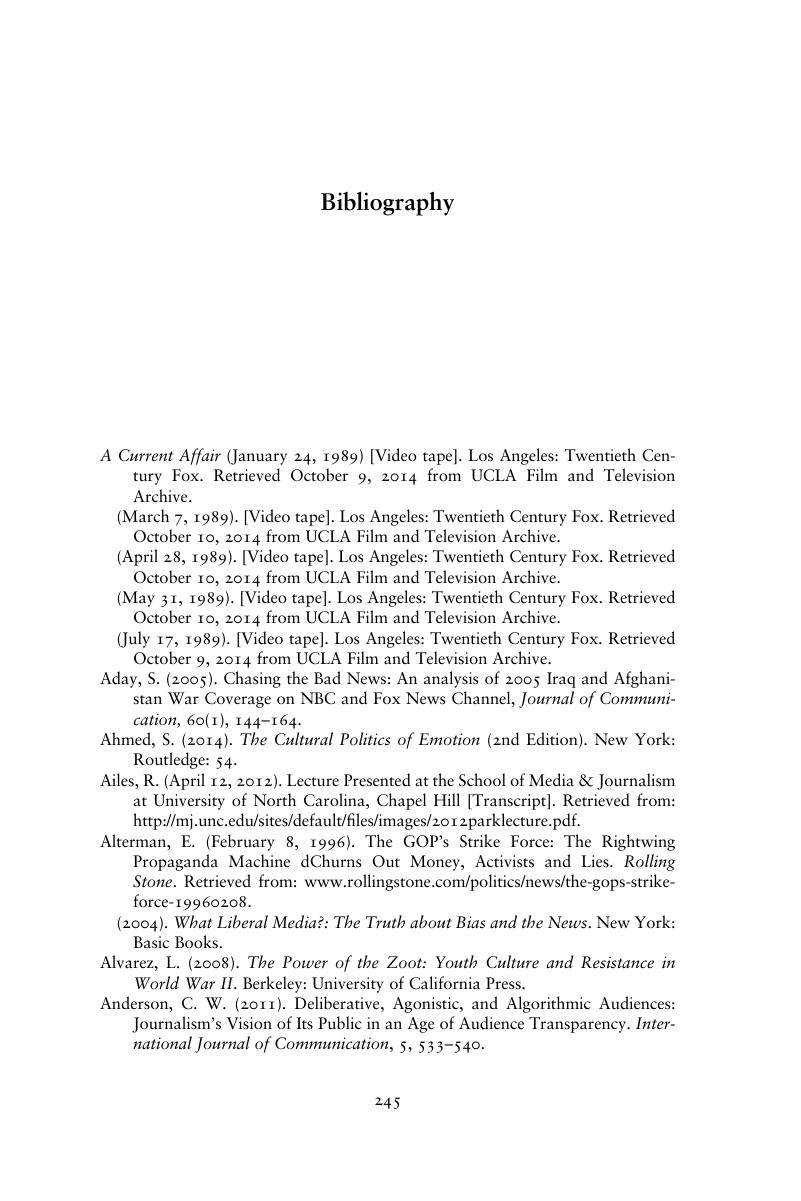Book contents
- Fox Populism
- Communication, Society and Politics
- Fox Populism
- Copyright page
- Contents
- Preface
- Acknowledgments
- Introduction
- 1 Channeling America’s “Tabloid Soul”
- 2 Populism on Cable News
- 3 “I’m a Blue-Collar Guy”
- 4 “The Makers and the Takers”
- 5 The Populist-Intellectual Tactic
- Conclusion: Trumpian Populism
- Postscript
- Bibliography
- Index
- Series page
- References
Bibliography
Published online by Cambridge University Press: 14 December 2018
- Fox Populism
- Communication, Society and Politics
- Fox Populism
- Copyright page
- Contents
- Preface
- Acknowledgments
- Introduction
- 1 Channeling America’s “Tabloid Soul”
- 2 Populism on Cable News
- 3 “I’m a Blue-Collar Guy”
- 4 “The Makers and the Takers”
- 5 The Populist-Intellectual Tactic
- Conclusion: Trumpian Populism
- Postscript
- Bibliography
- Index
- Series page
- References
Summary

- Type
- Chapter
- Information
- Fox PopulismBranding Conservatism as Working Class, pp. 245 - 281Publisher: Cambridge University PressPrint publication year: 2019



